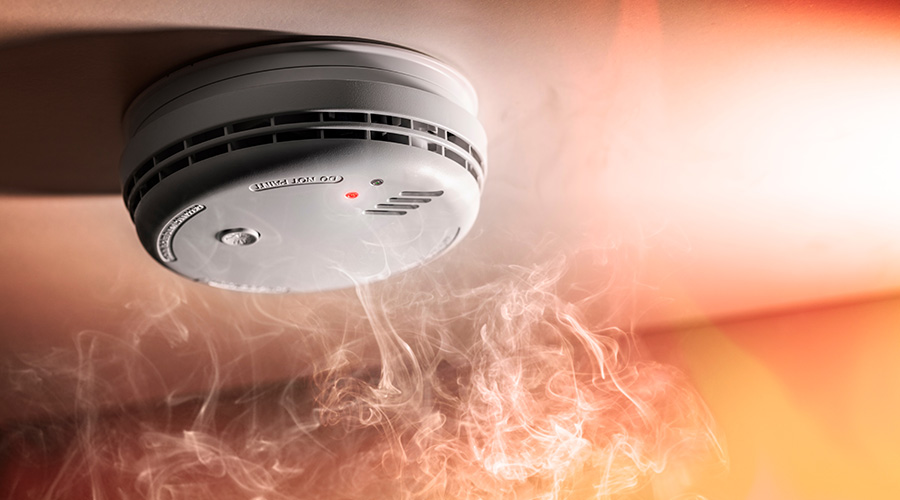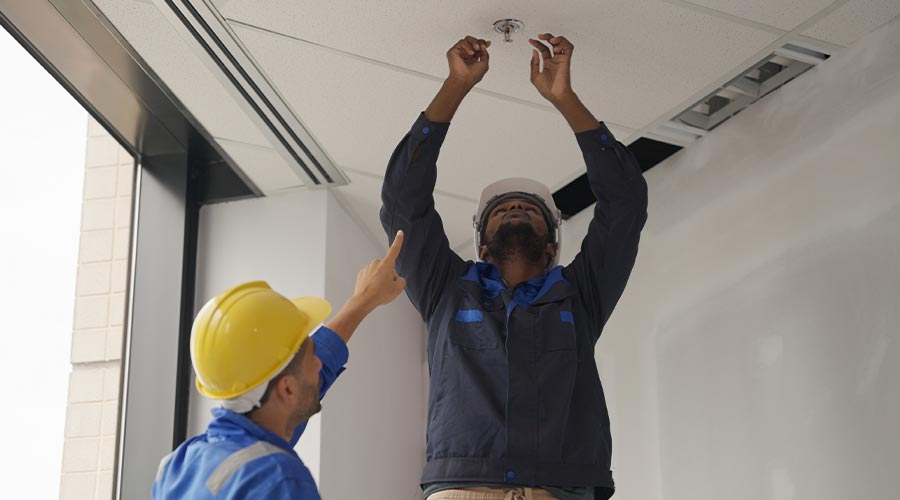New Fire Alarm Systems Offer Fewer False Alarms
Fire alarm systems of decades past suffered from the problem of "crying wolf." Nuisance or false alarms conditioned building occupants to ignore fire alarm systems when they sounded an alarm. This pattern of response over the years has resulted in loss of life. As one would expect, the detection technologies have evolved with the fire alarm control units in an effort to address these reliability concerns.
Detectors installed only a few decades ago relied on a single technology to perform detection. A large majority of spot-type smoke detectors were ionization detectors that relied on a radioactive source to ionize the particles in the air and monitored the resultant electric potential in the sensor-housing atmosphere. Other detectors, also widely used, were photoelectric smoke detectors using LED light sources. However, because these spot-type detectors were relying on one method of detection, they were susceptible to nuisance alarm events.
Current addressable spot-type fire detectors have evolved to utilize microprocessor-based detection technologies that allow the detectors or the fire alarm control unit to make intelligent decisions about what they are sensing. Most large fire alarm manufacturers now produce detectors that monitor for multiple factors — the presence of combustion gases, an increase in temperature and the presence of smoke particles — to make a "big-picture" decision. State-of-the-art and innovative detection systems often have the ability to discriminate combustion products from nuisance sources such as steam and dusty environments.
These new detectors have dramatically improved the reliability and credibility of fire alarm systems. As false or nuisance alarm frequency is reduced, the public perception will hopefully improve. Some manufacturers now offer guarantees that smoke detectors will not activate unless there truly is a fire event.
Spot-type smoke detectors installed 20 years ago also required sensitivity testing. When dirt infiltrated the detector's sensor housing, a nuisance alarm was often the result. Intelligent fire alarm systems have eliminated the need to perform sensitivity testing since the panel can track detector sensitivity. Additionally, intelligent detectors can track their factory sensitivity deviation and compare that sensitivity to degradation in performance as a result of dirt rather than a nuisance alarm; this condition is reported as a dirty detector. Building maintenance personnel can then address the dirty detector long before it results in an evacuation.
Linking Fire, Other Building Systems
Today, many manufacturers have developed fire alarm system integration methods with building automation systems that enable seamless communication among all building systems. These interfaces can use industry-standard building automation networking protocols that allow status sharing between systems. These capabilities as well as fire alarm system advancements enable smoke control, smoke exhaust, post-fire smoke exhaust systems, and automated fire compartmentalization to be controlled by one centralized system.
— Scott Golly
|
Related Topics:














